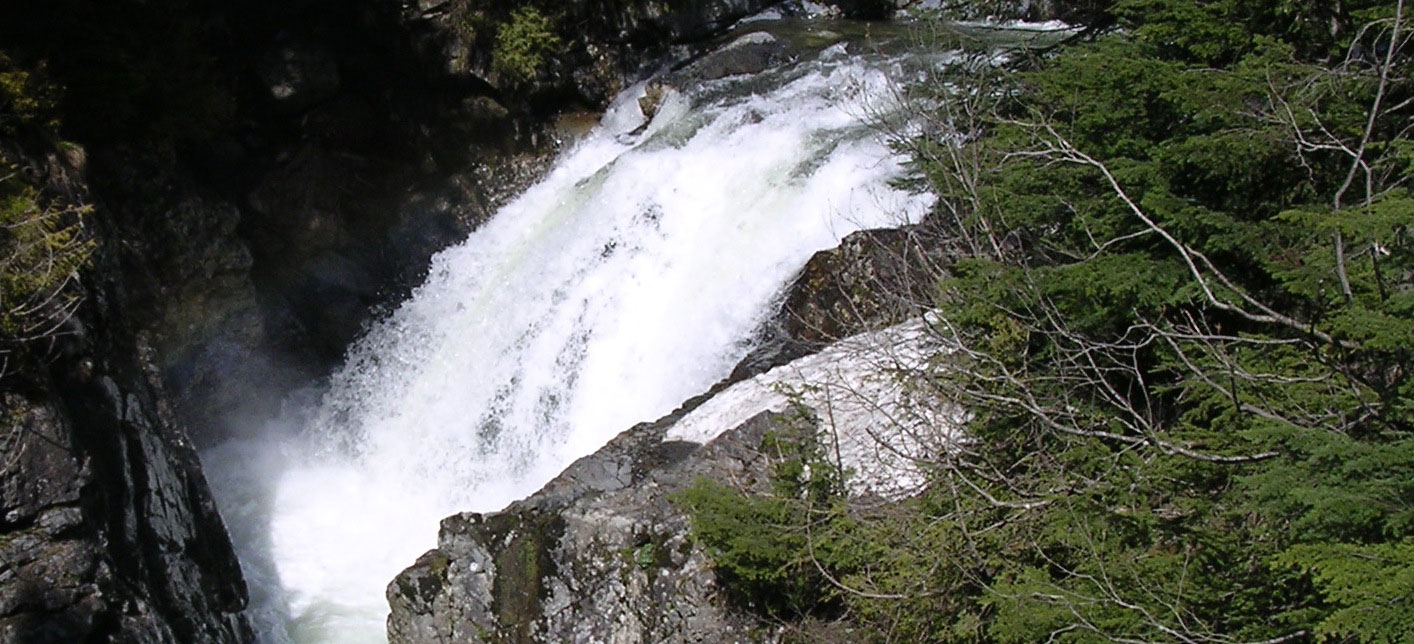Floodplain Inundation
Participants
Gregory B. Pasternack, Tarick Abu-Aly, Rafael Rodriguez, Bobby L. Gonzalez, Dr. Piotr Cienciala
Background
The spatially distributed effects of riparian vegetation on fluvial hydrodynamics during low flows to large floods are poorly documented. Conversely, once a floodplain does inundate, there is little known about the patterns of frequency-duration-magnitude of inundation. Both of these problems require near-census investigation to address.
Hydraulic Roughness Challenge
Drawing on a LiDAR-derived, meter-scale resolution raster of vegetation canopy height as well as an existing algorithm to spatially distribute stagedependent channel roughness, this study developed a meter-scale 2D hydrodynamic model of ~28.3- km of a gravel/cobble-bed river corridor for flows ranging from 0.2-20 times bankfull discharge, both with and without spatially distributed vegetation roughness. Once the model and model results were in hand, they were used to answer a suite of scientific questions about overbank fluvial processes.
At the floodplain filling flow of 597.49 m3/s, adding spatially distributed vegetation roughness parameters caused 8.0 and 7.4 % increases in wetted area and mean depth, respectively, while mean velocity decreased 17.5%. Vegetation has a strong channelization effect on the flow, increasing the difference between mid-channel and bank velocities. It also diverted flow away from densely vegetated areas. On the floodplain, vegetation stands caused high-velocity preferential flow paths that were otherwise unaccounted for in the unvegetated model runs. For the river as a whole, as discharge increases, overall roughness increases as well, contrary to popular conception.
Inundation Frequency-Duration-Magnitude Challenge
In this research, we examined how floodplain inundation regimes in a dynamic, regulated, gravel-cobble river in Mediterranean-climate region are controlled by reach-scale valley morphology, hydroclimatic conditions, and flow regulation. To this end, we combined an extensive LiDAR dataset on topography and vegetation, long-term hydrological records, as well as the outputs of hydrological and two-dimensional hydraulic models. Our analysis showed that estimated relative differences in the extent, duration and cumulative duration of inundation events under different hydrological and geomorphic conditions we considered are often as large as an order of magnitude and generally greatest for large and long duration events. Moreover, the relative impact of flow regulation was greatest under dry hydroclimatic conditions. Although the effects of hydroclimate and flow impairment exceed the influence of valley floor topography, the latter controls sensitivity of floodplain hydroperiod to flow regime changes and should not be ignored. These quantitative estimates of the relative importance of factors that control floodplain processes in Mediterranean, semiarid rivers contributes to better understanding of hydrology and geomorphology of this important class of channels. We also highlight implications of our findings for processes that shape floodplain habitat for riparian vegetation and salmonid fish, especially in the context of ecological restoration.
Publications
- Abu-Aly, T. R. 2012. Effects of LiDAR-derived, spatially-distributed vegetation 727 roughness on 2D hydraulics in a gravel-cobble river at flows of 0.2 to 20 times 728 bankfull. MS Thesis, University of California at Davis, Davis, CA.
- Abu-Aly, T. R., Pasternack, G.B., Wyrick, J. R., Barker, R., Massa, D., Johnson, T. Submitted. Effects of LiDAR-derided, spatially-distributed vegetative roughness on 2D hydraulics in a gravel-cobble river at flows of 0.2 to 20 times bankfull. Geomorphology.
- Cienciala, P., Pasternack, G. B. 2017. Floodplain inundation response to climate, valley form, and flow regulation on a gravel-bed river in a Mediterranean-climate region. Geomorphology, 282:1-17. doi:10.1016/j.geomorph.2017.01.006


